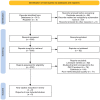Biocompatibility of 3D-Printed Dental Resins: A Systematic Review
- PMID: 38318586
- PMCID: PMC10839546
- DOI: 10.7759/cureus.51721
Biocompatibility of 3D-Printed Dental Resins: A Systematic Review
Abstract
Background: The biocompatibility of 3D-printed dental resins has become a critical concern in modern dentistry due to the increasing utilization of additive manufacturing (AM) techniques in dental applications. These resins serve as essential materials for fabricating dental prostheses, orthodontic devices, and various dental components. As the clinical adoption of 3D printing in dentistry grows, it is imperative to comprehensively assess the biocompatibility of these materials to ensure patient safety and dental treatment efficacy. This systematic review aimed to evaluate the existing body of literature on the biocompatibility of 3D-printed dental resins, thereby providing valuable insights into the potential biological risks associated with their use.
Methods: The search strategy to identify relevant papers was implemented across PubMed/MEDLINE, Scopus, Web of Science, Embase, Cochrane Library, CINAHL, and Google Scholar to identify relevant studies. Study selection was not limited to any particular timeframe of publishing. The revised CONSORT criteria were used to ascertain the authenticity and dependability of the review's outcomes. Comprehensive screening and eligibility assessment processes were conducted to select studies meeting predefined criteria. Biocompatibility-related parameters, including toxicity, mechanical properties, cell viability, and other relevant outcomes, were analyzed across selected studies using a standardized variable extraction protocol.
Results: A total of 9 studies were included in the systematic review. The findings encompassed various aspects of biocompatibility assessment, including material composition, mechanical properties, cell viability, and cytotoxicity. Some studies revealed significant improvements in flexural strength and cell viability with specific resin formulations, demonstrating their potential for enhanced clinical utility. Conversely, certain resins exhibited cytotoxicity, while others displayed promising biocompatibility profiles.
Conclusion: As per the assessed findings, material composition, post-processing techniques, and manufacturing methods emerged as critical factors influencing biocompatibility outcomes. While some resins exhibited favorable biocompatibility profiles, others raised concerns due to cytotoxicity. These findings emphasize the need for careful consideration when selecting and implementing 3D-printed dental resins, with a focus on materials engineering and comprehensive biocompatibility testing. Further research is warranted to elucidate the long-term biocompatibility and clinical implications of these materials.
Keywords: 3d printing; additive manufacturing; biocompatibility; cell viability; cytotoxicity; dental resins; mechanical properties; systematic review.
Copyright © 2024, Prakash et al.
Conflict of interest statement
The authors have declared that no competing interests exist.
Figures
References
-
- Additive manufacturing technologies used for processing polymers: current status and potential application in prosthetic dentistry. Revilla-León M, Özcan M. J Prosthodont. 2019;28:146–158. - PubMed
-
- Applications of 3D printing in dentistry—a review. Jawahar A., Maragathavalli G. https://www.jpsr.pharmainfo.in/Documents/Volumes/vol11issue05/jpsr110519... J Pharm Sci Res. 2019;11:1670–1675.
-
- 3D printing: Future of dentistry? Konidena A. J Indian Acad Oral Med Radiol. 2016;28:109.
-
- Rapid prototyping in dentistry: technology and application. Liu Q, Leu MC, Schmitt SM. Int J Adv Manuf Technol. 2006;29:317–335.
-
- Additive technology: update on current materials and applications in dentistry. Barazanchi A, Li KC, Al-Amleh B, Lyons K, Waddell JN. J Prosthodont. 2017;26:156–163. - PubMed
Publication types
LinkOut - more resources
Full Text Sources
Research Materials


